In the follow-up to a piece about policy schools operated by philanthropic foundations across Canada, contributor Tim Harper shares the stories of six graduates of these programs, and their policy wins.
When the British Columbia government announced a phase-out of individualized funding for autistic children, the move blindsided Julia Boyle.
In Manitoba, it was the pace at which Manitoba Housing was moving on a new funding model for non-profit housing that was frustrating Christina Maes Nino. In Ontario, Paul Bailey felt he was spinning his wheels when he needed provincial movement on stagnant funding for a crucial lifeline for Black youth in the province.
Three leaders in the charitable sector in this country facing three different challenges. They needed to urgently engage with government, to overturn a decision, inject some energy into a moribund program. They needed to be heard.
All three faced external pressures to act and felt the need to, as Maes Nino put it, “do something … do anything.” Most crucially, the trio are all graduates of policy schools operated by Canadian philanthropic foundations chronicled in a previous article, “Building the Charitable Sector’s Policy Muscle,” and all learned new methods and strategies to meet their goals. They have had varying degrees of success.
These are their stories, and the stories of other recent graduates – the sector’s policy change-makers of the future.
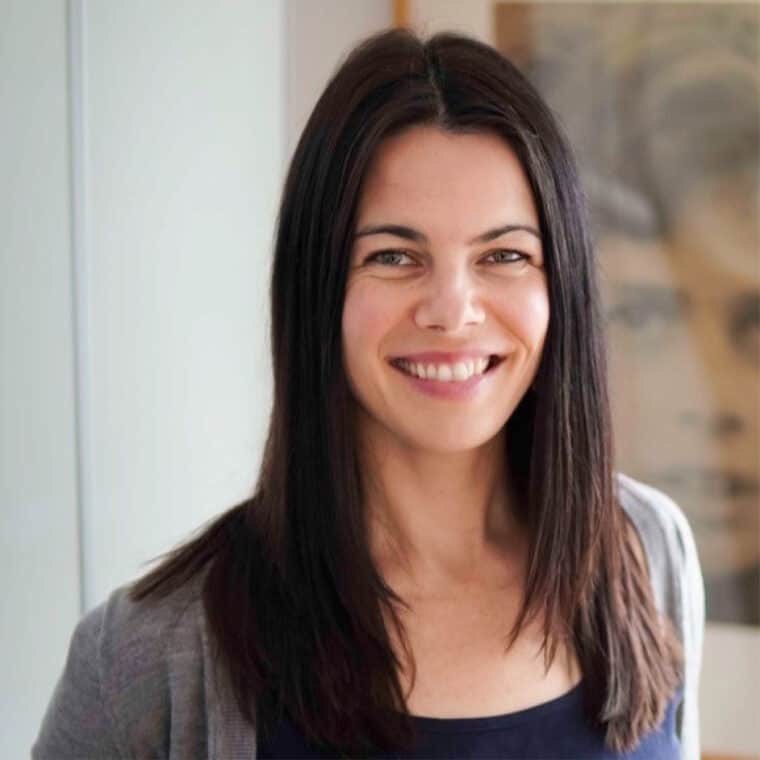
Julia Boyle
Julia Boyle, executive director, AutismBC, graduate of United Way British Columbia’s Public Policy Institute, 2022. The program brings together 25 leaders from BC’s non-profit sector and runs from January to June.
Boyle concedes she was caught off guard by the October 2021 decision by the BC government.
“We knew we wanted to rally and respond, but I wasn’t sure how, because I thought the policy window had closed,” she says.
A colleague forwarded her a link to the Public Policy Institute run by United Way British Columbia, and she immediately determined that was what she needed.
“It was like a real-time workshop,” she says. She worked through her challenge with instructors who were from government, giving her an idea of how the government dealt with constraints and may have arrived at its decision.
“I had to learn how not to respond as an activist and not just lash out,” Boyle says. “How do I figure out how to make a positive change?”
That meant keeping the pressure on the government without “pissing them off too much and ruining your relationship with them,” she says. “How do you find that balance of pushing for accountability from government while building a relationship with them? The instructors helped me when we were pretty angry and restrained us and had us pull back from responding in a non-strategic way.”
The instructors helped me when we were pretty angry and restrained us and had us pull back from responding in a non-strategic way.
Julia Boyle, AutismBC
That meant humanizing government and remembering they were public servants and not the enemy. Premier David Eby rescinded the policy in November 2022, but Boyle stresses that she did not do this alone. “I am grateful, honoured, and humbled by the advocacy and activism work of disabled British Columbians, parents, the First Nations Leadership Council and Union of BC Indian Chiefs (UBCIC), researchers, disability organizations, and many others,” she says. “I have learned so much from the Public Policy course, but also from other advocates in the community.”
Boyle understands that policy victories rarely come within a year, but she has now parlayed that into a working group that has become a consultative body for the government.
“It was something I was very proud of,” she says. “I hadn’t really done much policy work before this.” In thanking instructors at the Public Policy Institute, she acknowledged that the original government decision included “moments of tears, anger, and frustration.” Hearing from those with experience inside the government helped her sharpen her strategy and led to her ultimate victory.
“If you have never worked in government, it’s very difficult to understand how politicians and government works. You need a good understanding of that to be successful in your advocacy.”
***
Editor’s note: This segment was revised on April 12 to clarify Boyle’s perspectives and approach.
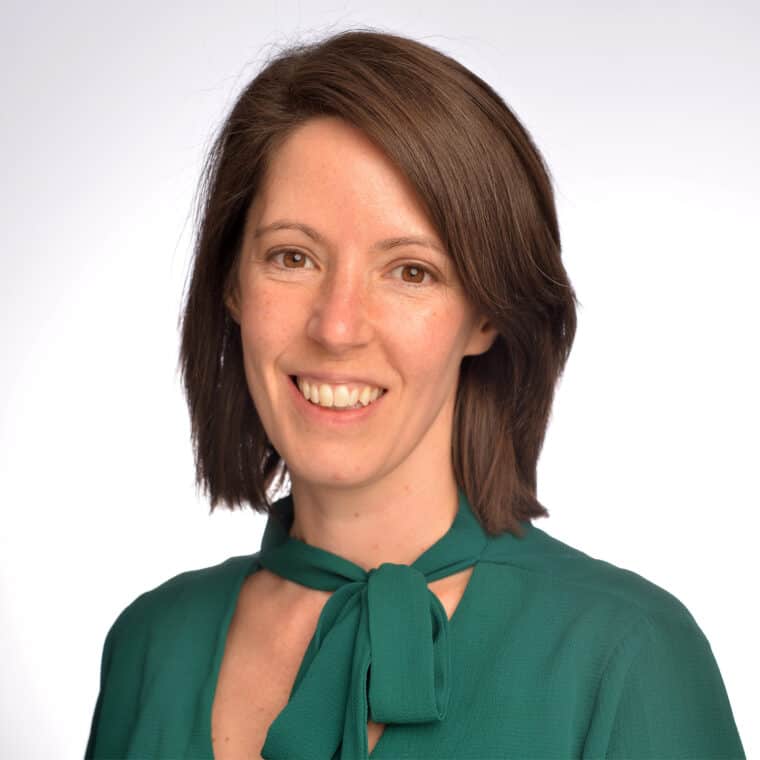
Christina Maes Nino
Christina Maes Nino, executive director, Manitoba Non-Profit Housing Association, graduate of Max Bell Foundation’s Public Policy Training Institute, 2022. The program has 25 spots for employees or board members of registered charities. It is delivered at 12 sessions in Edmonton and Calgary over six months, from January to June, and participants are expected to commit 10 to 15 hours per month.
Maes Nino has been working with the unhoused in Western Canada for years: in Vancouver’s Downtown Eastside, as a community development worker in social housing in Calgary, and in various capacities in Winnipeg. She was the co-author of Winnipeg’s 2011 Street Health Report and coordinated Winnipeg’s first street census in 2015. Since 2018, she has been the executive director of the Manitoba Non-Profit Housing Association.
“I’ve been doing this work but never quite knew if I was doing it right,” she says. “I’ve had mentors and watched people doing the work, but my training is in social work and city planning, and in those fields we don’t talk about changing public policy.”
She wanted to build her skill set – but also build her confidence.
Her policy ask was pushing Manitoba Housing to work with the non-profit sector to come up with a new funding model for the social housing sector. “We’ve been able to work with government to make sure they are aware of the issue, and at the political level there is a clear understanding there needs to be a new funding model and a desire to create one. But there is a bit of a lag in the implementation.”
Reminding them you have a solution is policy advocacy; it’s not being a pest.
Christina Maes Nino, Manitoba Non-Profit Housing Association
Before Maes Nino enrolled at Max Bell, her ask might have been “Do something … do anything,” she says, because the issue has been on the provincial radar for some time. But she couldn’t gauge how “pushy” she should be with government. The course taught her to be flexible, she says. She learned she needed to develop proposals, bring them forward, and “do it over and over, to bring it back every few months. Reminding them you have a solution is policy advocacy; it’s not being a pest.”
Previously, as an activist, she says, she could be stubborn, but she has learned how to build a long-term relationship with government.
“There’s so much to learn, no matter how long you’ve been doing this work. Dedicate the effort and time in doing it. It is an awful lot of work if you want to be engaged, but it will change your perspective.”
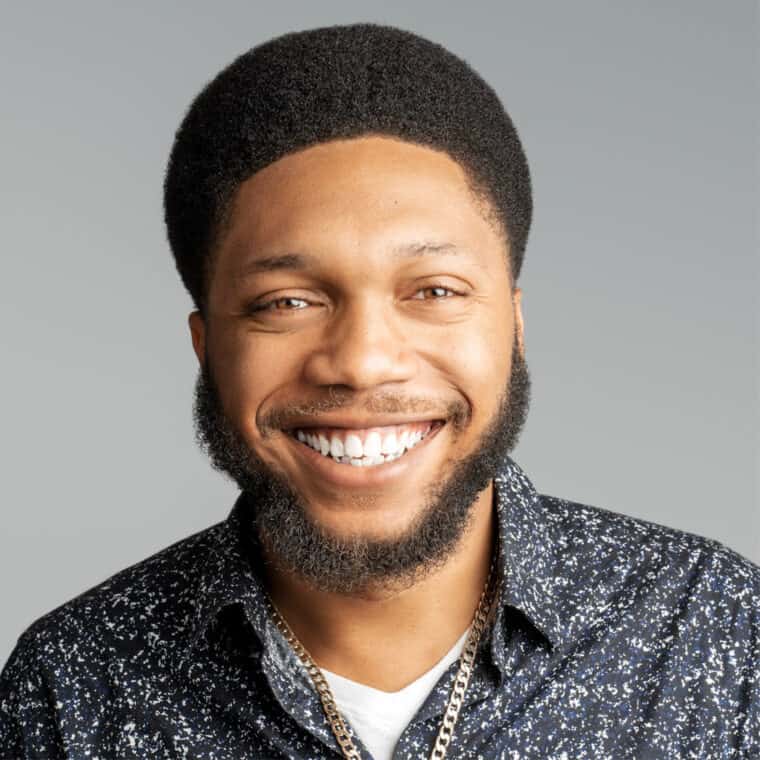
Paul Bailey
Paul Bailey, executive director, Black Health Alliance, graduate of the Maytree Policy School, 2020. Maytree accepts 21 policy professionals to its program, which runs from January to June and features an overnight retreat in January and a final in-person session in Toronto. Participants are expected to commit 10 to 12 hours per month.
Bailey has spent a decade in community development work, long enough to learn what not to do in policy advocacy. His work has involved petitions, protests, or meetings with MPPs, and occasionally MPs.
“Through those experiences, sometimes you learn what not to do, or you know it didn’t go well,” he says. He recalls a meeting with a cabinet minister in the former Ontario Liberal government. He tried to show power in numbers at the meeting – there is often merit in the power of numbers – but in this case it wasn’t the best strategy. He brought too many agenda items to the meeting, and he had about 10 minutes to make his ask clear.
“I knew we left the meeting with the minister not necessarily knowing what our issue was [and not having conveyed] a clear ask. Nothing came out of it.” He knew he came at his issue a little hot, as an activist, not understanding the pace of government. “You can’t come in and slap the minister across the face with your issue.”
Maytree brought in former government officials and onetime elected members, and he was shown the perspective from that side of the meeting table. “It colours in the picture of how you get from your ask to success.”
I got a much deeper understanding for the human side of policy-making and how you take advantage of a policy window to push your issue forward.
Paul Bailey, Black Health Alliance
While Bailey has been executive director of the Black Health Alliance since 2020, overseeing a team of eight with a budget of $1.5 million, his Maytree experience helped him understand the goals of government and how to align his goals with those of the government. “I got a much deeper understanding for the human side of policy-making and how you take advantage of a policy window to push your issue forward.”
Bailey had been trying to get a funding increase for a program that had been established in the 1990s, the Substance Abuse Program for African Canadian and Caribbean Youth (SAPACCY), a lifeline for Black youth that had frayed badly over the years. Its funding had stalled for 20 years, meaning the program had been seriously diminished during a time of crisis in mental health and substance abuse among Black youth.
Taking skills he learned at Maytree, Bailey was able to work with partners in the community and secure that funding increase from the Progressive Conservative government of Doug Ford. He won an increase from $200,000 to $2.9 million annually and an expansion of the program with satellites across the Greater Toronto Area, Hamilton, Windsor, and Ottawa.
It may have seemed to outside observers that it would have been more difficult to attain such a policy win under the PCs than the Liberals, but Bailey says that is often a cliché. “The program teaches you … that at the end of the day, it is not just about people’s political leanings; it actually comes down to how you sit, or how you communicate information, and sometimes how a file connects to the personal experiences of a minister in helping understand your issue. Yes, there are partisan leanings, but when it comes to your issue, it’s about how you are communicating and connecting.”
In discussions at Maytree, Bailey came to realize that he can still leverage his activism when it comes to policy advocacy, and he says the school created a space to reflect on the challenges faced by a Black man working in the policy advocacy space.
“The way that I think about my meetings, it still brings that collective activism to the table – the power in numbers – but it is structured through a lens on how decisions are actually made.”
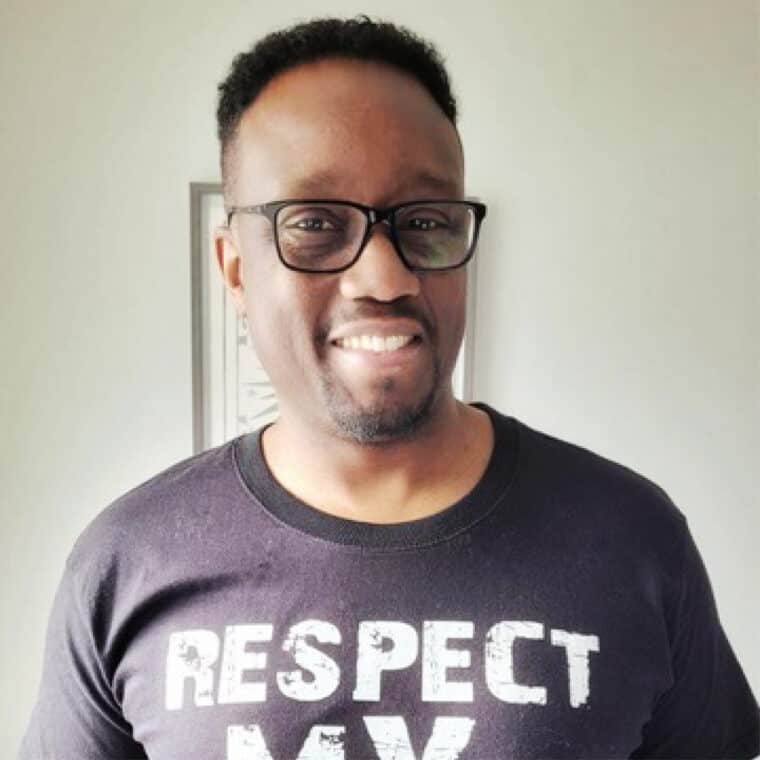
Greg Frankson
Greg Frankson, aka “Ritallin,” educator, activist, consultant, award-winning literary and spoken-word artist, and recipient of the Banff Forum’s Arne Bengt Johansson Fellowship. The forum brings together up to 200 thought leaders, including three recipients of the arts scholarship, each autumn. In 2022 it met in Charlottetown.
Frankson is a spoken-word artist and a leader in Canada’s arts community, but he came to that community after first being trained as a history teacher and spending a decade in the public service. An interest in public policy has always been there, but when it comes to debating policy in this country, he says, “the arts community has always been relegated to the sidelines of those conversations.”
I feel like artists can make a crucial contribution to the development of policy in an age where science and information and evidence-based approaches have predominated – but haven’t gotten the job done.
Greg Frankson, Arne Bengt Johansson Fellowship recipient
Yet, Frankson says, artists bring a perspective “based on innovation, creativity, and collaboration. I believe that the best public policy decisions are going to incorporate those characteristics into the development process. So I feel like artists can make a crucial contribution to the development of policy in an age where science and information and evidence-based approaches have predominated – but haven’t gotten the job done. We need new approaches, and we need to create new avenues and new paths.”
The stereotypical belief, he says, is that artists are “lazy, flighty, unreliable” and generally too troublesome and unpredictable to be able to contribute constructively. “I think those stereotypical views are damaging to the public good.”
The man who has gone by the stage nickname of Ritallin for 20 years says that he and his fellow artists helped break down some perceptions and misconceptions in Charlottetown. And he left the forum with a deeper commitment to social issues in this country, including the need for affordable housing and greater access to mental health care, and to issues of diversity and inclusion that affect Canada’s Black and Indigenous communities. He is putting those commitments in action as a member of the Public Imagination Network, a group of eight artists who have come together to explore ways to contribute to the broader policy conversation, and in his post as diversity, equity, inclusion, and anti-racist advisor to the Canadian Real Estate Association.
“Most critically, it is helping to inform my art,” he says.
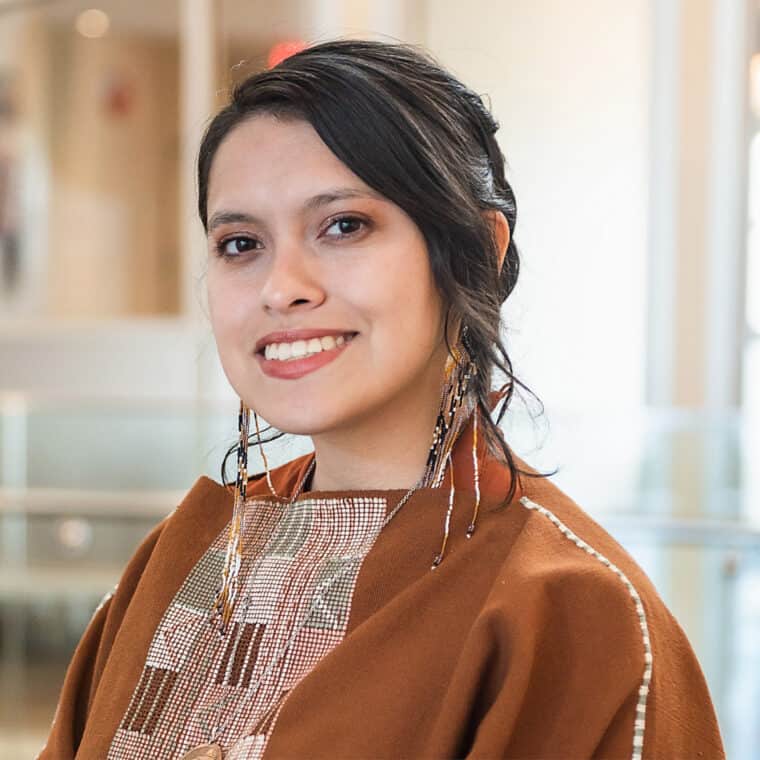
Lucero González Ruiz
Lucero González Ruiz, biodiversity campaigner at Georgia Strait Alliance, graduate of the Vancouver Foundation LEVEL Youth Policy Program, 2022. The program brings together 16 Indigenous and racialized immigrant and refugee youth aged 19 to 29 from across BC. It was initially envisioned as a five-year pilot project and completed its third year last fall. After a pause, it will continue for two more years in 2024.
González came to Canada from her native Mexico eight years ago to study biological sciences, conservation, and evolution at Simon Fraser University. After graduating, she landed her current job at the Georgia Strait Alliance, a Vancouver non-profit environmental organization, where she is the biodiversity campaigner.
The Vancouver Foundation has been a funder of the alliance, and it made her aware of its LEVEL Youth Policy Program, a home for immigrant, refugee, and BIPOC activists in the non-profit sector.
González does her work through the lens of science, which can be rare in policy advocacy. She is focused on the potential implementation of policy around legislation on environmental racism, a private member’s bill sponsored by Green Party leader Elizabeth May that is before the House of Commons. Specifically, she says, her work would ensure that victims of environmental racism, largely Indigenous and Black Canadians, are not retraumatized and revictimized after its passage. (Environmental racism refers to any environmental degradation, from landfills to toxic dump sites to unsafe drinking water, that directly affects or is in close proximity to marginalized Black or Indigenous Canadians. Efforts to outlaw it have spanned decades.)
At 25, she sees a long career in policy advocacy, but she has faced hurdles as a young woman of colour. “I was having – and still have – trouble seeing myself reflected in the environmental movement,” she says.
Before her time at the LEVEL program, she thought of government as a bit of a “scary place,” but after hearing from former and current government officials, she gained insight that makes it less intimidating to approach those officials with a policy ask.
The LEVEL Youth Policy Program was so empowering. It gave me the tools to say, ‘I can do it, and not only can I do it, I can do it well.’
Lucero González Ruiz, Georgia Strait Alliance
She came to the program without a long history of policy advocacy, having to continually prove herself and experiencing a bit of “imposter syndrome,” that maybe she wasn’t worthy of the course. Instead, she says, she found “magic,” and a home in the program.
“I have had to prove myself a lot,” she says. “I have had to fight that a lot. That’s why the Youth Policy Program was so empowering. It gave me the tools to say, ‘I can do it, and not only can I do it, I can do it well.’
“That’s the magic of the program. Every second of the program they ensured we are empowered and comfortable with who we are. It taught us that our identity is what makes us good at this. Our identity has been used against us in so many ways, but we were taught to flip that around and learn that our identity and our lived experience make us powerful at this and are going to make changes.”

Laura Dragon
Laura Dragon, Aboriginal studies student at Langara College, graduate of the Gordon Foundation’s Treaty Simulation program, 2020. The program allows participants to learn to negotiate and implement treaties. A program for Métis youth was held in Toronto in January, and the National Treaty Simulation was held in Ottawa in March.
Dragon, of the Gwich'in Nation in the Northwest Territories, will transfer to the University of British Columbia next fall, where she plans to earn a degree in Indigenous studies and then apply for the Aboriginal law program.
“I grew up in Vancouver, and I never got to grow up in my traditional territory or land,” Dragon says. “I didn’t really know how to relate to the other youth at the simulation who came from Yukon, Nunavut, or Northwest Territories. Listening to everyone speak and understanding why they came made me realize I need to do more to educate myself on tradition and modern treaty negotiations.”
The simulations were incredibly helpful in guiding the questions about modern-day treaties and treaties that already exist.
Laura Dragon, Aboriginal studies student, Langara College
Before she joined the program, she didn’t have a full understanding of treaties or negotiation.
“The simulations were incredibly helpful in guiding the questions about modern-day treaties and treaties that already exist,” she says. “I was shocked at how much I did not know and was so moved by the experts on the panel who guided us along the way, as they have so much knowledge and experience themselves with treaties and negotiating.”
During her time at the Gordon program, she learned the importance of treaties and how the younger generation has a duty to learn about them so those being negotiated – and those yet to be negotiated – will survive. She also left with a renewed respect for the Elders who taught her and other participants. The simulation gave her “a deep dive” into what her leaders do and the work it takes to “fight for our rights as Indigenous communities.”
“This is what lit the fire inside me to learn and do more, so I enrolled in school and decided that my future was going to be dedicated towards treaty work so that these obligations that the Canadian government have towards Indigenous people never die.”


